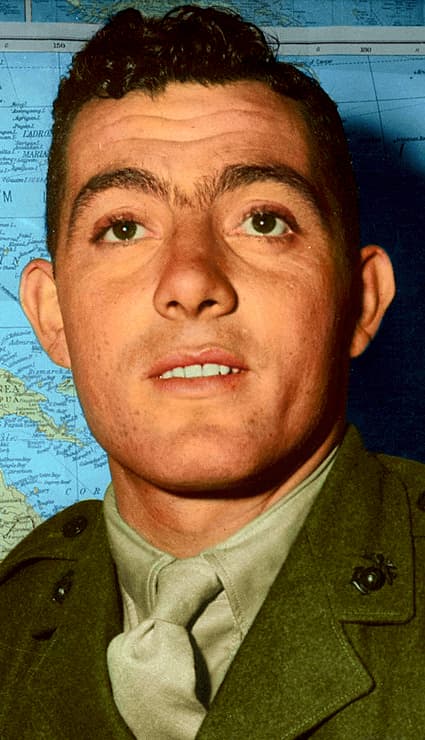The Pittsburgh Press (March 3, 1945)
Marines nearing north coast of Iwo
Leathernecks drive 700 yards in day
GUAM (UP) – The veteran 3rd Marine Division battled to within a half mile of the northeast coast of Iwo today in a determined bid to split the Jap garrison.
Maj. Gen. Graves B. Erskine’s 3rd Division resumed its attack early today after pushing ahead 700 yards to within 600 yards of sheer cliffs overlooking a 300-yard beach on the northeast coast yesterday.
A thrust to the northeast coast would isolate the Japs on the east coast from those on the northwest and speed final conquest of tiny Iwo, only 750 miles south of Tokyo. Front dispatches said the Iwo campaign was already entering its last stages.
Capture of a 362-foot height dominating Northern Iwo, by the 3rd Division yesterday, was expected to facilitate the drive to the northeast coast. The division was also within 1,200 to 1,400 yards of the northern tip of Iwo.
The Japs were still fighting desperately and exacting a steady toll of Marines despite losses of nearly three-quarters of the original garrison of 20,000 men.
The number of Jap bodies recovered by the Marines reached 7,127 – an increase of 2,343 since Monday – by noon yesterday and thousands more were known to have been pulled back by the enemy. Thirty-two prisoners have been taken.
A front dispatch from Marine Combat Correspondent Jim Lucas revealed that the Japs have begun attempts to supply the hard-pressed garrison from the air.
Jap planes dropped cargo chutes believed carrying tanks of water on northern Iwo for “thirst-crazed enemy troops,” Sgt. Lucas said. There are no springs or natural sources of water on Iwo.
The 4th and 5th Marine Divisions, slugging up the east and west coasts respectively, also made small gains yesterday over some of the most rugged and bitterly-defended terrain yet encountered in the Pacific.
Just ahead of the 5th Division lies the small west coast town of Nishi. The 5th Division yesterday beat off the first enemy counterattack since Tuesday.
Carrier planes made a bombing and rocket raid on Omura town and the airfield on Chichi in the Bonin islands, just north of Iwo. Army Liberators also attacked Chichi.

